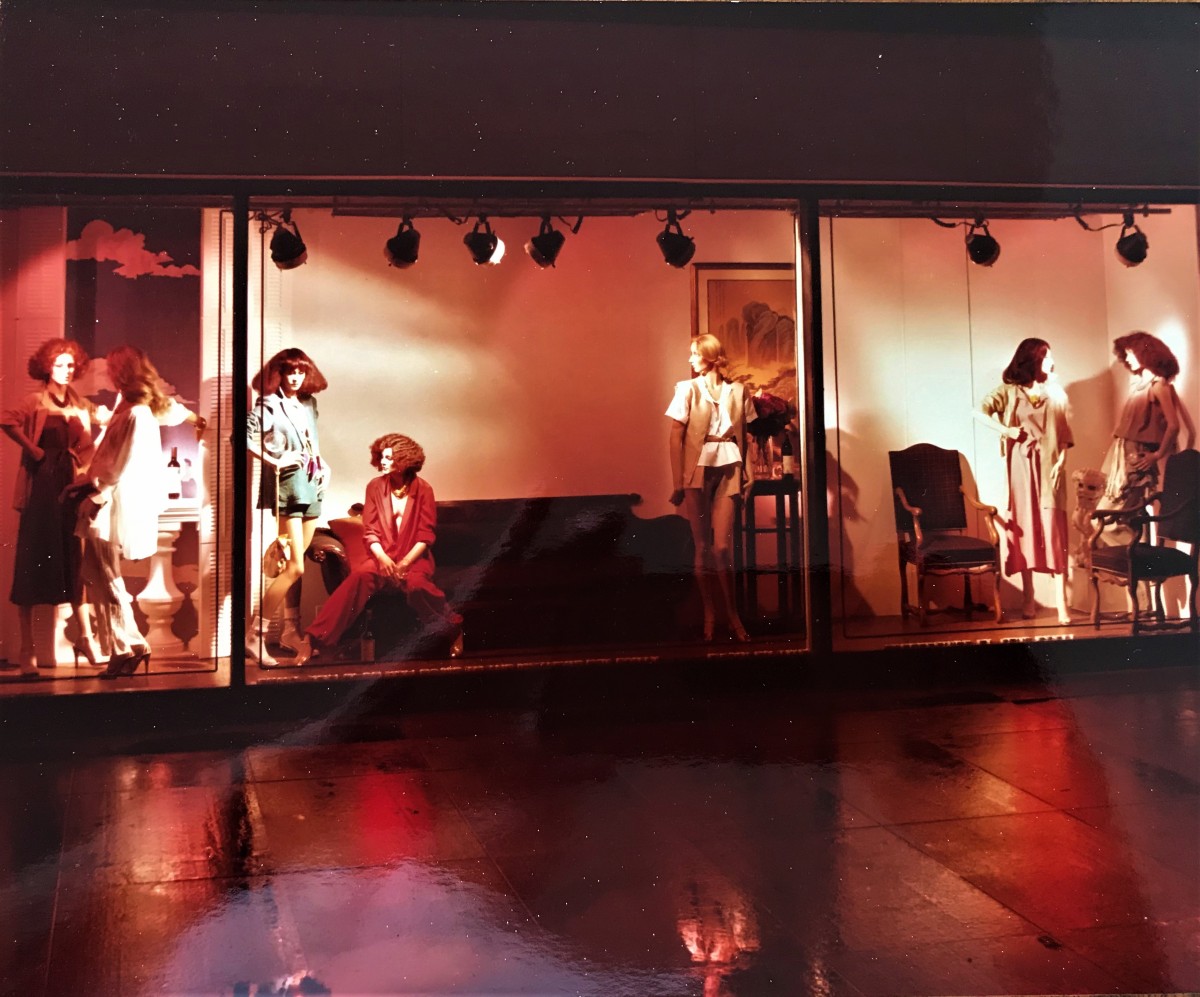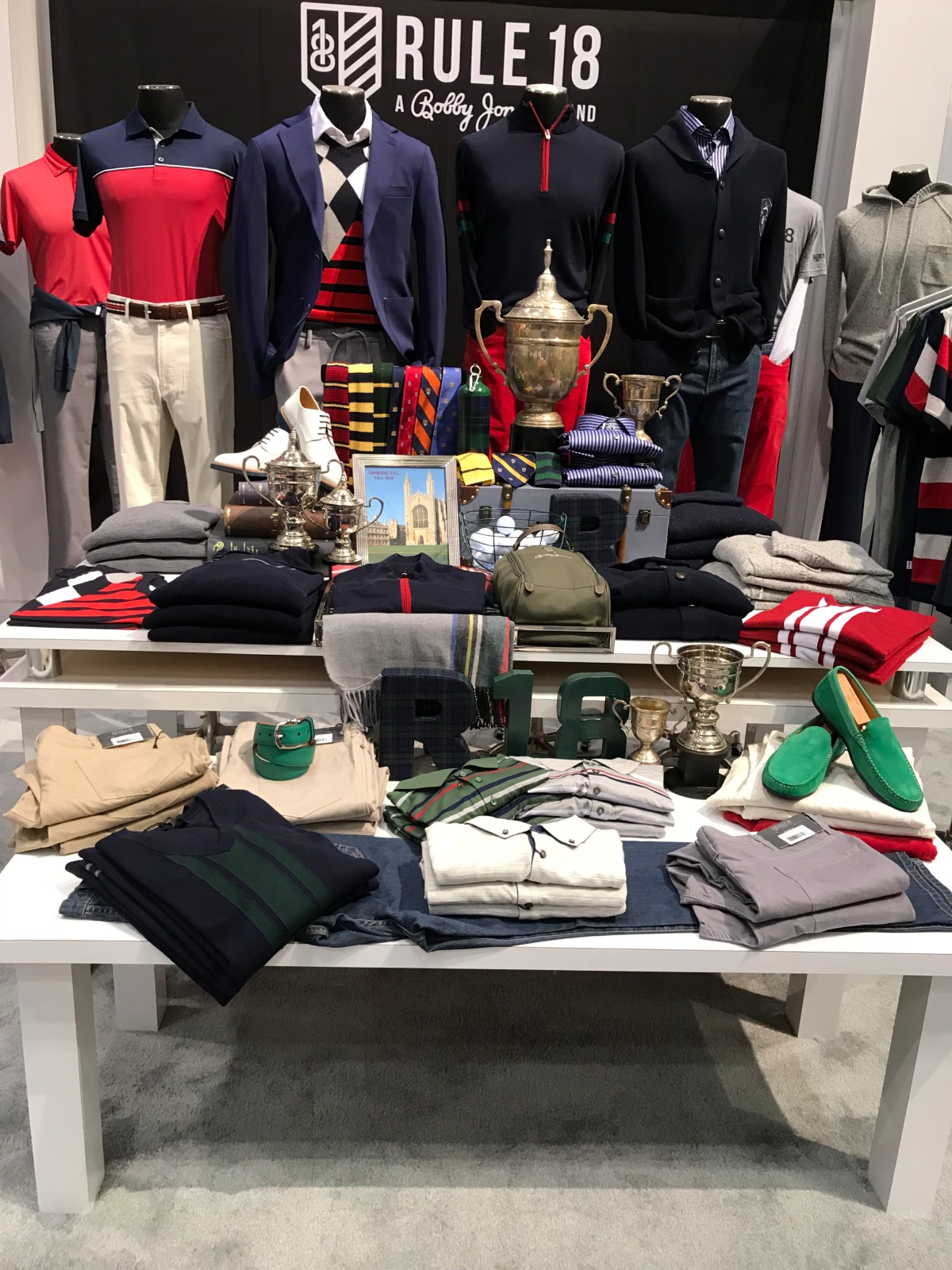It’s easy to get locked in to a visual merchandising style that you’re good at and know very well. In my case many years ago it was “Minimalism”. This was a super clean style that focused on the product with very little in the way of props. And what props there were would more than likely be styled in a “Repetition” manner. This style also relied on excellent lighting – a good selection of floods, narrow floods, spots and pin spots. At the time that Minimalism started to gain popularity – it received a mixed reception. Some did not like it and was thought to be bland and lazy. Others liked it because of it’s focus on product – especially fashion.

But sometimes it was fun to break out of that mold and try something different. In my case after several years of mainly using this design discipline at two consecutive retail women’s fashion stores – I wanted to mix things up and see if people were paying attention.
I decided to do a two part display window in the main fashion window utilizing – not only the store’s vast supply of antiques that were used as store decor – but the, new at that time, styrofoam props. The theme of the display window was “A Party”.

The display window was an immediate success. Everyone in the store from the executives to the sales people commented first on the different style of the window especially but also – they just liked it. Many of the store’s regular customers also made pleasant comments. The building that the store was in – called “The Hancock” at the time – was a 100 story building in the downtown area and half of the building’s floors were apartments. There were a lot of regular customers in that building.
But – wait – I wasn’t done with this design – remember a “Two Part” display window? After the window’s two week run we installed the second half of the display window.

The second part of “The Party” display window was popular too – everyone thought it was a clever idea – except for the sales ladies in the hosiery department. The door to this display window was on the back side of the hosiery department – through a narrow opening in their counter near their cash register. The ladies were so used to us bringing in next to nothing in the way of props – my minimal style – then all of a sudden we were hauling in on these props – including a huge antique sofa. They complained to beat the band – but by the time they had finished complaining – we were done.
By the next display window change I had gone back to my minimalist style – which I loved and the store personnel did as well. It just goes to show that mixing up your style can have some benefits and hones your display design acumen – you can always go back to your comfort zone.

*All photographs courtesy of https://jdvincentdesign.com/
















